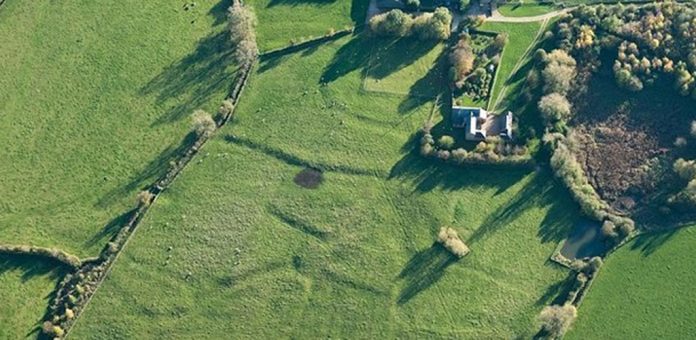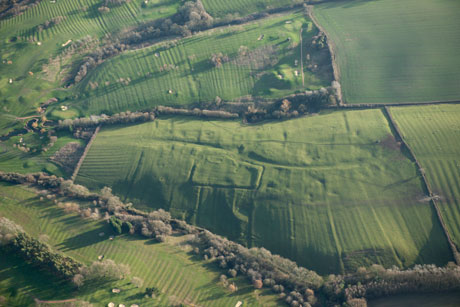They are amongst the best-preserved lost villages in the county and have been chosen for special protection because of the exceptional survival of their earthworks and buried remains, revealing the layout of the settlements as well as the ways in which their shape and size changed over the centuries. The sites include: Little Oxendon, Walgrave, Steane, Clipston, Horton, Ashby St Ledgers and Kirby.
Aerial photography of the earthworks and buried features in the villages, along with archaeological surveys and documented discoveries of artefacts tell us much about life in medieval Northamptonshire. The earthworks have lain largely undisturbed by later occupation, since the villages were deserted and then often used for grazing. Their archaeological remains have the potential to reveal many more details about the social and economic development of these communities, and the physical earthworks themselves allow us to experience the spaces in which medieval people farmed and made their homes in the English landscape.
Most of the villages were first settled in the 9th or 10th centuries, possibly earlier, and are mentioned in the Domesday Book.
Heritage Minister Ed Vaizey said:
“Preserving these medieval villages for the future will help us understand our past, and I am pleased that these ancient monuments are being added to the schedule of protected sites. They are wonderful examples of the hidden heritage that exists across the UK, and will allow us to uncover the secrets of medieval society going back centuries.”
Sarah Gibson, English Heritage designation team leader for the east said:
“Northampton’s abandoned villages are repositories of information about the past and archaeologists will be able to use the remains of the villages to tell us more about the social life and economy of Northamptonshire many hundreds of years ago.”
Many of these villages have been occupied continuously to the present day, though some have declined in size or were deserted during the medieval or post-medieval periods. The most rapid rate of decline was in the 14th and 15th centuries. The reasons were varied: declining economic viability, the enclosure of common land, and a shift from arable farming to sheep rearing which needed more land for grazing and a smaller labour force. Contrary to popular opinion, the Black Death of 1348 was rarely responsible for the complete abandonment of a village.
The deserted medieval villages were assessed as a defined area survey which drew on surveys and research carried out since the 1980’s and recent aerial photographic reconnaissance and site inspections.


